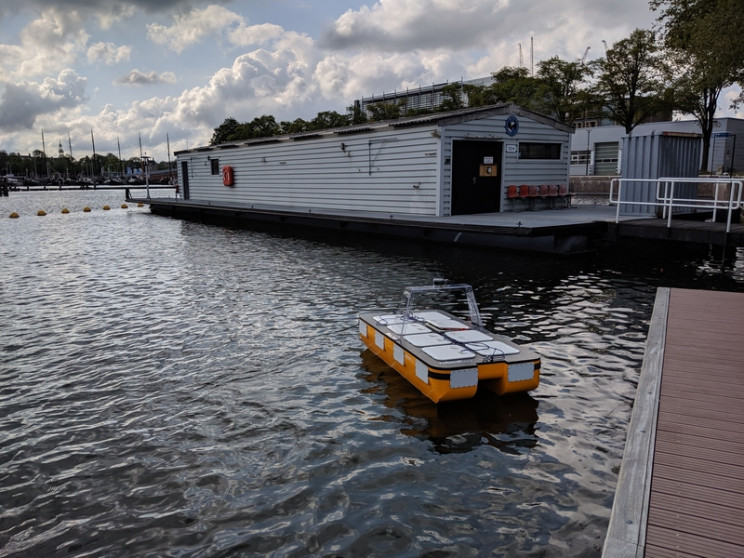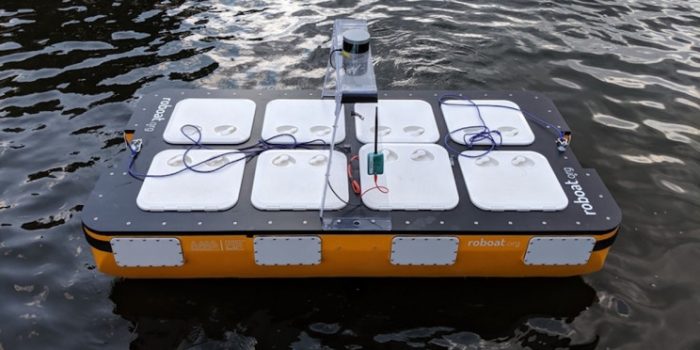In collaboration with Amsterdam Institute for Advanced Metropolitan Solution, MIT’s Computer Science and Artificial Intelligence Laboratory (CSAIL) has been working tirelessly on a self-sufficient boat model.
Roboat II, which is half the size of the original’s projected measurements, sailed on the canals of Amsterdam for almost 3 hours without suffering any technical problems and even managed to dock itself by just making a 7 inch (17cm) error.
This project has been in the works for over 5 years now and has gone through a size upgrade, and has been programmed to navigate waters independently.
Roboat II is the upgraded version of Roboat; it weighs approximately 110 pounds (50kg) and floats smoothly around due to its four propellers, LiDAR, GPS, and different sensors. It can move in any direction and carries two persons or the equivalent weight in cargo.
Because of its algorithm for Simultaneous Localization and Mapping (SLAM), the self-sufficient vessel can be designated precise tasks such as picking up people. After the task is made known to the Roboat, it starts its course bearing the weather conditions and traffic.
“The creation of an autonomous boat system proficient in right mapping, robust control, as well as human transport, is a critical step towards having the system executing the full-scale Roboat. We are hoping that soon, it will be applied in other boats to make them autonomous,” announced Wei Wang, senior postdoctoral associate, Senseable City Lab and CSAIL, and researcher from the study.

Based on the work done on the creation of drones and autonomous land vehicles, it’s high time, the same effort is made on water vehicles.
The modular system can have various boats coordinating simultaneously, with one ‘leader’ boat taking complete charge. This implies that a bigger set of cargo can be transported at once, due to a technique called “distributed control system,” where smaller ‘follower’ boats move alongside the ‘leader’ boat at the same time.
The vision the team plans to increase the scale of the boat’s autonomous version, which can hold between four and six passengers and will measure 13 feet (four meters) long. The team is also concentrating on improving its real-time object detection and identification to make it more capable of handling more complex situations bound to occur in a city’s canal system.


